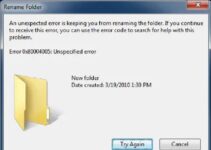There are two types of files in a computer-executable and non-executable. The difference between the two is that when opening the file, the executable file is executed directly by the CPU whereas in the case of a non-executable file, it isn’t executed by the CPU.
Executable files perform functions that keep in line with encoded instructions given by the user to the computer whereas the functionality of non-executable files is limited only to specific tasks, for example, .mp3 for audio files, .jpg for image files etc. Executable files have the extension .exe in Windows.
GSvr.exe, also known as GEST Service for program management, is thus an executable file that belongs to software Energy Advance Saver B by Giga-Byte Technology or Gigabyte United Inc.
Its typical file path is “C:\Program Files (x86)” (in most cases C:\Program Files (x86)\GIGABYTE\EnergySaver\ or C:\Program Files (x86)\GIGABYTE\GEST\). Its known file sizes are 68,136 bytes (50% of all occurrences), 80,392 bytes or 47,624 bytes.

GSvr.exe has a registered digital signature and is a Verisign signed file. Its publisher URL is www.GIGABYTE.com. There is no information about the author of the file.
Understanding GSvr.exe
GSvr.exe is a process associated with the gaming platform GameShadow, which provides users with game-related content, updates, and patches. This executable file is typically located in the installation directory of GameShadow and is responsible for managing the platform’s functionalities.
Read Also:
Is GSvr.exe a Virus or Malware?
GSvr.exe itself is not inherently a virus or malware. It is a legitimate component of the GameShadow application and serves a specific purpose within the gaming ecosystem. However, like any executable file, GSvr.exe could potentially be exploited by malicious actors if it becomes compromised or if it is used as a disguise for malware.
Risks Associated with GSvr.exe
While GSvr.exe is not inherently harmful, there are potential risks associated with it:
- False Positives: Some antivirus programs may flag GSvr.exe as suspicious or potentially unwanted due to its behavior or characteristics. This could lead to false positives and unnecessary concern among users.
- Exploitation by Malware: Malicious actors could theoretically exploit GSvr.exe by replacing it with a malicious file or by using it as a disguise for malware. However, such instances are rare and typically require the user to download compromised versions of GameShadow from unofficial sources.
Should GSvr.exe Be Uninstalled?
In most cases, there is no need to uninstall GSvr.exe, especially if it is a legitimate component of the GameShadow application. However, if users are concerned about potential security risks or if they do not use GameShadow and wish to remove it, uninstalling the application may be a viable option.
Common GSvr.exe Errors
When the application executes the process, issues may arise. Some messages may be displayed on the screen during startup or shutdown of Windows, or during installation of a program or during the execution of Energy Saver Advance B9.0316.1 program or maybe even during installation of the Windows Operating System. Such error messages include:
- “GSvr.exe Application Error”
- “GSvr.exe has encountered a problem and needs to close.” (Windows XP)
- “GEST service has stopped working. Windows is checking for a solution to the problem… “(Windows 10, 8, 7)
- “Cannot find GSvr.exe.”
- “GSvr.exe is not a valid Win32 application.”
- “GSvr.exe is not running.”
Is GSvr.exe harmful?
Since it has access to monitor other applications and is not a Windows core file itself, non-system processes like these, may be harmful to the computer if infected with virus. Therefore, it has a technical security rating as 33% dangerous (notwithstanding other user reviews).
Users have claimed that it has the potential of causing system slowdowns or high CPU usage. Erasing the file will free up some space, reduce the chances of deteriorating the computer’s performance, and will not adversely affect the computer in any way.
If the file is a Trojan (malware) posing as a legitimate file, its location will be anywhere but C:\Program Files\GIGABYTE\EnergySaver\essvr.exe. To verify the validity of the location and thereby the legitimacy of the file, one can run the Security Task Manager.
Security Task Manager reflects to the user, potential threats to the computer, and unnecessary processes. It was featured as one of the Top Download Pick of The Washington Post and PC World.
How to Remove or Delete GSvr.exe?
A clean computer is what you must maintain to avoid problems such as these! That means and includes cleaning the hard disk from time to time, scanning for potential malware and viruses, uninstalling any programs or applications that are not used, and enabling automatic Windows updates. Not to forget, one must regularly backup data.
First Fix
To follow through a thorough cleansing as well as strengthening the security of the computer, one can download a full security application like Security Task Manager, which unlike Windows Task Manager, lays down details about the full directory path and file name, security evaluations, process type,
which software the process belongs to, and many such results that help in the identification of otherwise unknown malware. It shall show whether or not the gsvr.exe file is unsecured and whether it needs to be removed.
Second Fix
An alternate to such detection and subsequent removal of the Trojan, is to uninstall Energy Saver Advance B or Dynamic Energy Saver by following these steps –
Step 1 – Firstly, press Windows key + X to open the Start menu.
Step 2 – Click the first menu item Programs and Features. In the list of installed programs, search Energy Saver Advance B or Dynamic Energy Saver.
Step 3 – Select the software you want to uninstall. Click the Uninstall button which appears at the top of the program list and follows the instructions to uninstall the program.
Third Fix
Third way of handling GSvr.exe issues is by way of MSConfig, which is short for Microsoft System Configuration Utility.
Step 1 – Press Windows + Q. Enter the word “cmd” and then press the keys Ctrl + Shift + Enter to run.
Step 2 – In addition to the above steps, you need to enter msconfig and press the enter key for results.
Fourth Fix
Usually, GSvr related program may be installed on your computer. So one can check the softwares and programs downloaded or installed and see what is not in regular use. To do so, one simply has to go to the Control Panel and click on Programs to see the list of all the Programs.
After doing so, one can delete and uninstall whatever programs are not being used. Lastly, restart the computer and check if GSvr related issues persist.
Read Also:
Conclusion
Although various websites report that only 8% of users remove this file and so it may be harmless, it can be safely said that it does pose possible threats if found to be infected with virus. This is not to say that this issue cannot be addressed with simple hard drive cleaning.
Therefore it is necessary that the users are updated about the latest gsvr, that they keep the location of the file in check to ensure that no malware is threatening the hard disk under the garb of “GSvr.exe” file name and lastly, that they investigate to stay safe.
GSvr.exe may be needed to support real software and so, by way of simple means like a full security application like Security Task Manager, or PC repair tool, one can ensure that the file is removed so that the computer is not under any threat.


